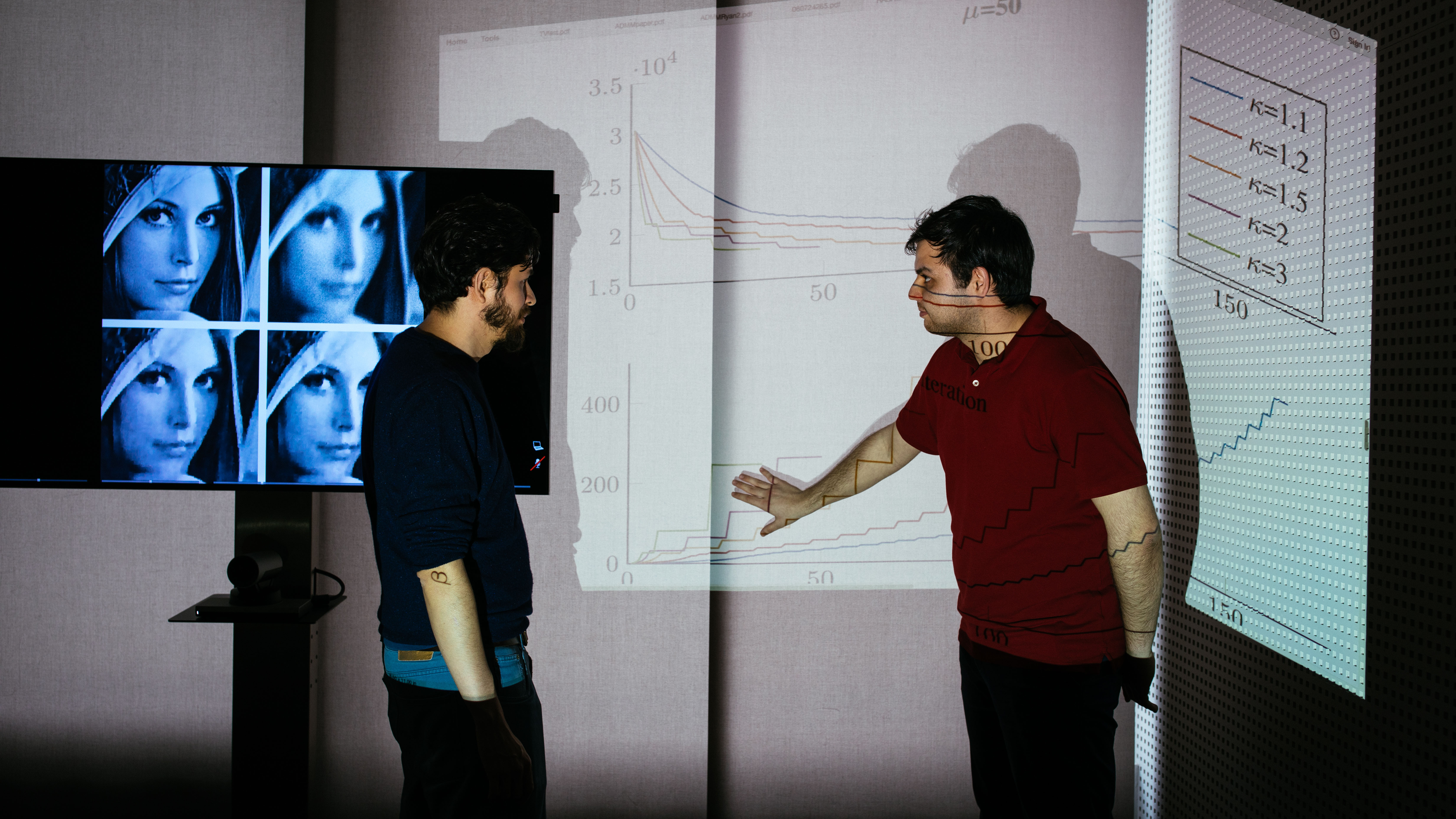Digital image processing: a look back at the research-company partnership between I2S and Geostat
Date:
Changed on 14/04/2021

I2S is a Gironde-based company that specialises in the production of very high resolution optical scanners and cameras. They develop both imaging control systems for industrial use and portable 2D and 3D imaging equipment for the biomedical sector. One of their flagship applications is their range of Digibook scanners for use in heritage digitisation. This is a highly competitive sector, with each new innovation tipping the scales in favour of either I2S or their main rival from Germany.
In 2017 the company decided to breathe new life into its expertise in this sector and on other applications by launching a major innovation programme. “We felt it was necessary to seek out new ideas in order to push our boundaries”, explains Christophe Lacroix, director of innovation for I2S.
Seeking an academic partner capable of meeting their expectations, I2S turned to Geostat a project team at the Inria Bordeaux Sud-Ouest research centre specialising in signal processing. “The fact that they were local was an advantage, but what swung it for us was the relevance of their research, particularly Hicham Badri's PhD, and how this could fit with our activities”, explains Christophe Lacroix. Geostat's researchers are experts in using statistical physics to describe signals, whether sound signals, heart signals or, as in this case, image signals.
The two teams took the decision to create a joint laboratory (which came to an end in 2021) which earned the Inria Innovation Lab label. The aim was to develop a product that could be incorporated into I2S’s processing chain. “Having such a concrete objective gave us the motivation to come up with something more than just a software library. It wasn't simply a case of technology transfer”, explains Hussein Yahia, head of the Geostat project team.
What are the cornerstones of an Inria Innovation Lab? Research-company projects are jointly devised and coordinated, with risks and resources shared. Joint road maps are drawn up, the aim being to meet the company’s strategic needs in terms of innovation while opening up new research opportunities in academia.
“Our main challenges were technology- and marketing-related. One key concern was to improve the image quality of our scanners, which is the main aspect our products are judged on”, explains Christophe Lacroix. The overarching objective for the collaboration was to create an algorithm capable of optimising the quality of large images produced by I2S. The company was then keen to integrate the result in the form of a software component in order to be able to use it in a range of different products or activities.
“Over the three years of the partnership, not only did we tackle practical problems, but we also launched more exploratory research and flexed our muscles by anticipating issues that had been identified but which hadn’t yet been encountered”, adds Christophe Lacroix. In addition to improving the image quality of I2S scans, the two teams also considered other areas of research, including super resolution, in which the level of detail is increased, or the reconstruction of 3D images. “The advantage of this format is that our two teams were working together, meaning it wasn’t a client-supplier dynamic. We built hybrid objects, drawing on shared expertise”, adds Christophe Lacroix.
The partnership proved successful and led to the production of software that has since been incorporated into I2S’s processing chain for heritage digitisation. The algorithm is based on demosaicing, taking a parsimonious approach: “This enabled us to improve the quality of noise filtering, in a shorter timescale”, explains Hussein Yahia. Before thinking about the potential economic impact of the collaboration, I2S evaluated its impact through an increase in a qualitative score (in the form of stars) given to their images in accordance with an international standard: in 2017, the company contributed towards the creation of an ISO standard on document and heritage digitisation defined using standardised criteria and tests.
The collaboration also created significant scientific opportunities in astronomy. “If we hadn’t pushed our research with I2S as far as we did, then we would never have achieved such good results in astronomy. The feedback there has been very interesting”, adds Hussein Yahia. Indeed, the results were used to study turbulence on data from interstellar clouds. A collaboration with the Bordeaux astrophysics laboratory led to a founding study being accepted for publication in the prestigious review Astronomy and Astrophysics in early 2021. Other studies on this same subject have also been announced.
So what does the future hold for this collaboration? “We will keep it going in order to achieve the same results in noise filtering and cancelling, only this time through the use of deep learning, which will help us to move even quicker”, explains Hussein Yahia. “We felt that Inria was very much driven by results. There was a remarkable willingness on their part to keep to their engagements, and to find solutions and workarounds for unpredictable problems. As a result, we are keen to continue working together”, adds Christophe Lacroix.
This first collaboration also paved the way for new crossovers between the business world and experts in disciplines linked to that of Geostat at other Inria centres. Watch this space!